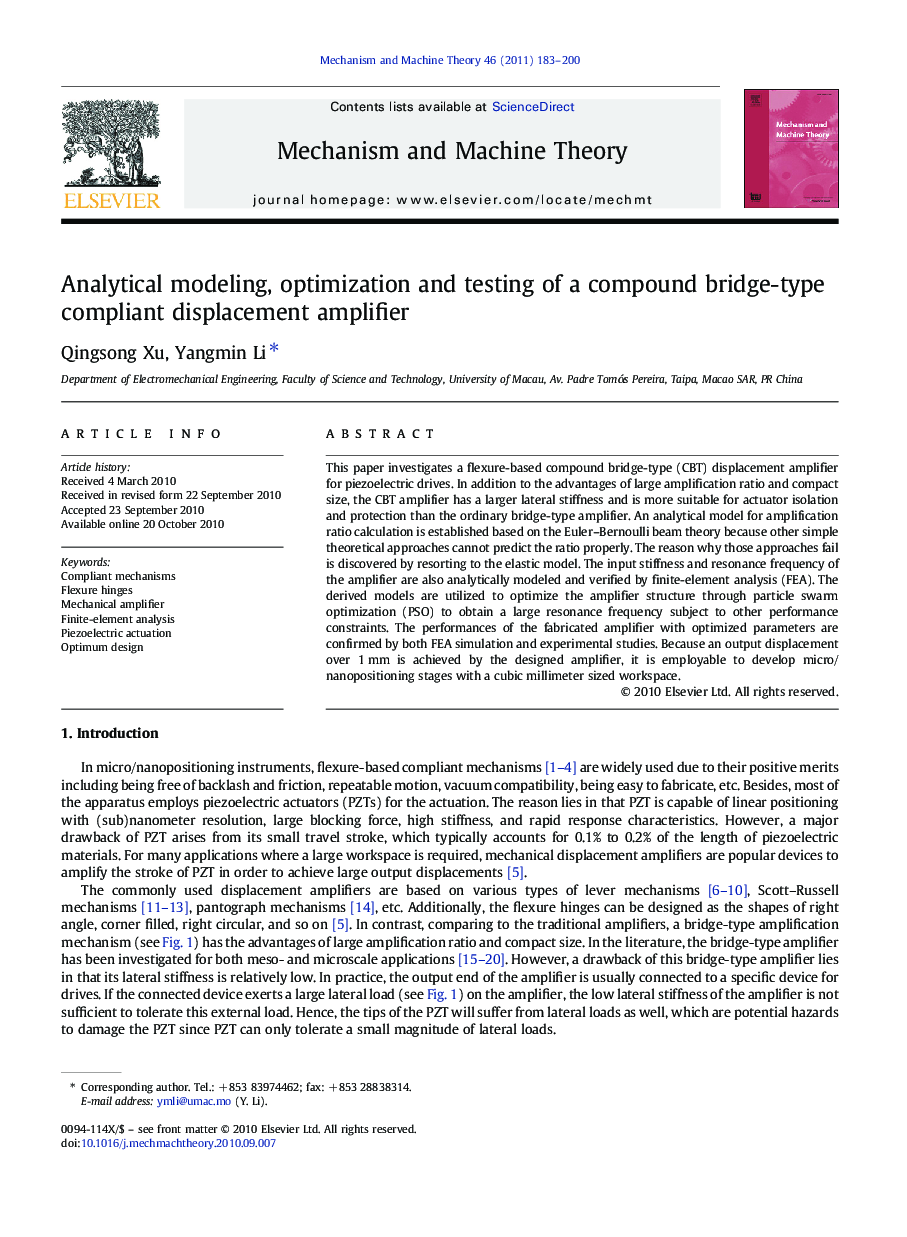| Article ID | Journal | Published Year | Pages | File Type |
|---|---|---|---|---|
| 799852 | Mechanism and Machine Theory | 2011 | 18 Pages |
This paper investigates a flexure-based compound bridge-type (CBT) displacement amplifier for piezoelectric drives. In addition to the advantages of large amplification ratio and compact size, the CBT amplifier has a larger lateral stiffness and is more suitable for actuator isolation and protection than the ordinary bridge-type amplifier. An analytical model for amplification ratio calculation is established based on the Euler–Bernoulli beam theory because other simple theoretical approaches cannot predict the ratio properly. The reason why those approaches fail is discovered by resorting to the elastic model. The input stiffness and resonance frequency of the amplifier are also analytically modeled and verified by finite-element analysis (FEA). The derived models are utilized to optimize the amplifier structure through particle swarm optimization (PSO) to obtain a large resonance frequency subject to other performance constraints. The performances of the fabricated amplifier with optimized parameters are confirmed by both FEA simulation and experimental studies. Because an output displacement over 1 mm is achieved by the designed amplifier, it is employable to develop micro/nanopositioning stages with a cubic millimeter sized workspace.
Graphical AbstractFigure optionsDownload full-size imageDownload as PowerPoint slideResearch Highlights►The analytical models of a compound bridge-type displacement amplifier are established. ►It is found that the compliances of connecting arms of the amplifier have a great influence on the amplification ratio. ►A prototype of the amplifier is fabricated by the wire-EDM process. ►The relationship between the output and input displacements of the amplifier is almost linear.
